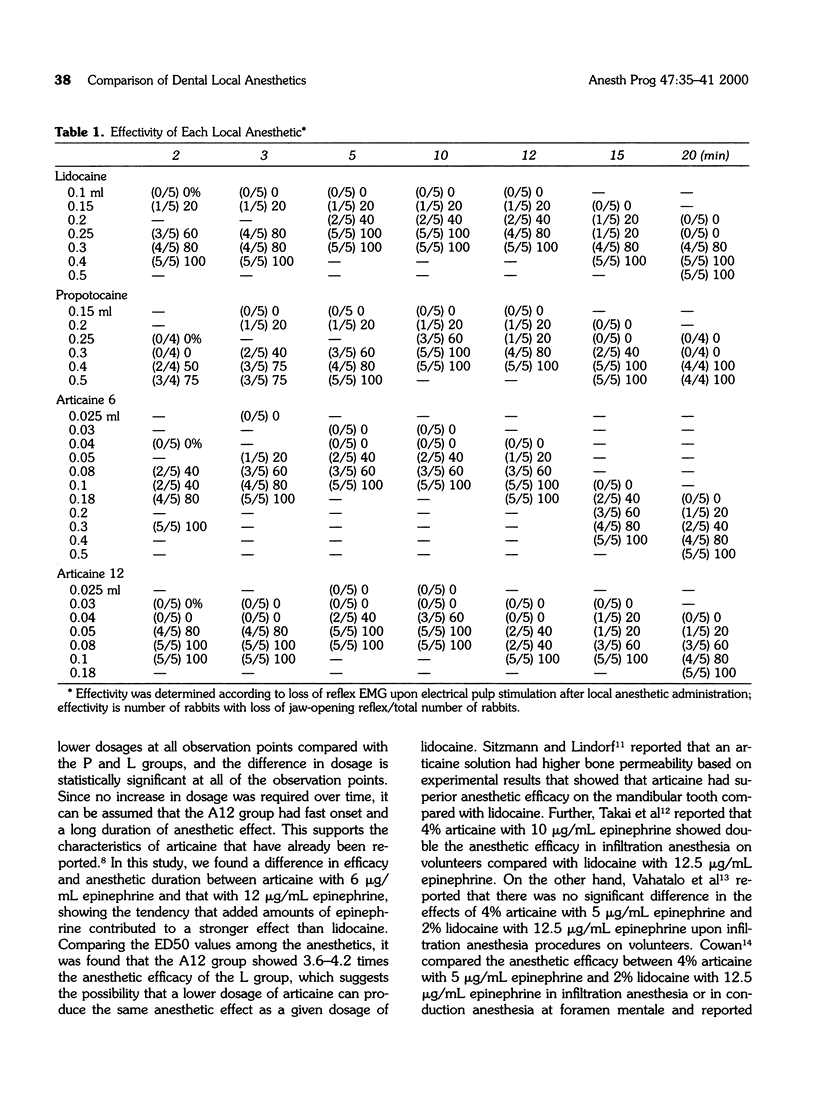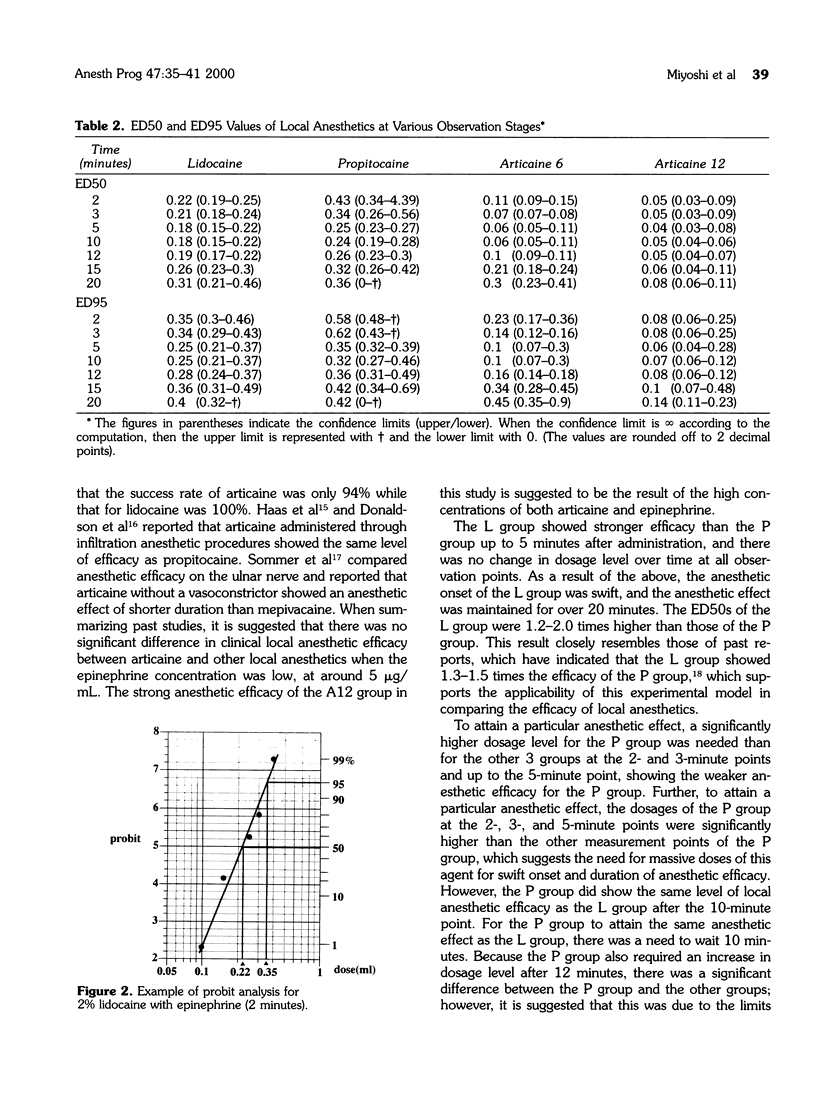Abstract
The potency of 4 local anesthetics to dental pulp was compared. Drugs were 4% articaine with 12 microgram/mL epinephrine (A12), 4% articaine with 6 microgram/mL epinephrine (A6), 2% lidocaine with 12.5 microgram/mL epinephrine (L), and 3% propitocaine with 0.03 IU/mL felypressin (P). Local anesthetics were injected into the dental root of the mandibular incisor. Electromyogram (EMG) of the digastric muscle was measured during the jaw-opening reflex induced by electrical stimulation. The disappearance of the EMG wave was judged as positive evidence of anesthesia. The determination of ED50 of the anesthetic was made by probit analysis. The ED50 of the A12 was minimal in all the tested anesthetics throughout the entire course. The potency in the A6 was 2.8 times that of the L. The potency of the A12 at the 15-minute measurement was 3.8 times that of the A6. The ED50 of the P was higher compared with those of the other 3 groups. It was concluded that articaine showed quicker onset than lidocaine and propitocaine and that there was a need to increase the dosage to attain a quick onset or to extend the duration.
Full text
PDF






Selected References
These references are in PubMed. This may not be the complete list of references from this article.
- Cowan A. Clinical assessment of a new local anesthetic agent-carticaine. Oral Surg Oral Med Oral Pathol. 1977 Feb;43(2):174–180. doi: 10.1016/0030-4220(77)90153-0. [DOI] [PubMed] [Google Scholar]
- Curtis A. L., Marwah J. The nociceptive jaw-opening reflex: evidence for alpha 2 adrenoceptor involvement. Pharmacol Biochem Behav. 1987 Feb;26(2):437–444. doi: 10.1016/0091-3057(87)90145-6. [DOI] [PubMed] [Google Scholar]
- Donaldson D., James-Perdok L., Craig B. J., Derkson G. D., Richardson A. S. A comparison of Ultracaine DS (articaine HCl) and Citanest forte (prilocaine HCl) in maxillary infiltration and mandibular nerve block. J Can Dent Assoc. 1987 Jan;53(1):38–42. [PubMed] [Google Scholar]
- GRIFFIE R. A., BRUNEL A. Une méthode d'exploration de l'anesthésie de conduction. C R Hebd Seances Acad Sci. 1959 May 11;248(19):2802–2804. [PubMed] [Google Scholar]
- HERR F. Zur Frage der Standardisierung der Prüfung von Lokalanästhetica. Arzneimittelforschung. 1958 Mar;8(3):137–141. [PubMed] [Google Scholar]
- Haas D. A., Harper D. G., Saso M. A., Young E. R. Comparison of articaine and prilocaine anesthesia by infiltration in maxillary and mandibular arches. Anesth Prog. 1990 Sep-Oct;37(5):230–237. [PMC free article] [PubMed] [Google Scholar]
- JONES W. R., KERLEY T. L., WEAVER L. C. QUANTITATIVE EVALUATION OF INFILTRATION ANESTHETICS IN ALBINO MICE. J Pharm Sci. 1964 Nov;53:1409–1410. doi: 10.1002/jps.2600531130. [DOI] [PubMed] [Google Scholar]
- Malamed S. F. What's new in local anesthesia? Anesth Prog. 1992;39(4-5):125–131. [PMC free article] [PubMed] [Google Scholar]
- Sitzmann F., Lindorf H. H. Vergleichende experimentelle Reizschwellenmessungen der Wirkung des Lokalanästhetikums Ultracain (Carticain) Dtsch Zahnarztl Z. 1976 Feb;31(2):128–130. [PubMed] [Google Scholar]
- Sommer S., Fruhstorfer H., Nolte H. Vergleichende Untersuchung über die Wirkung von Carticain 1% und Mepivacain 1%. Anaesthesist. 1978 Jul;27(7):65–68. [PubMed] [Google Scholar]
- Vähätalo K., Antila H., Lehtinen R. Articaine and lidocaine for maxillary infiltration anesthesia. Anesth Prog. 1993;40(4):114–116. [PMC free article] [PubMed] [Google Scholar]


